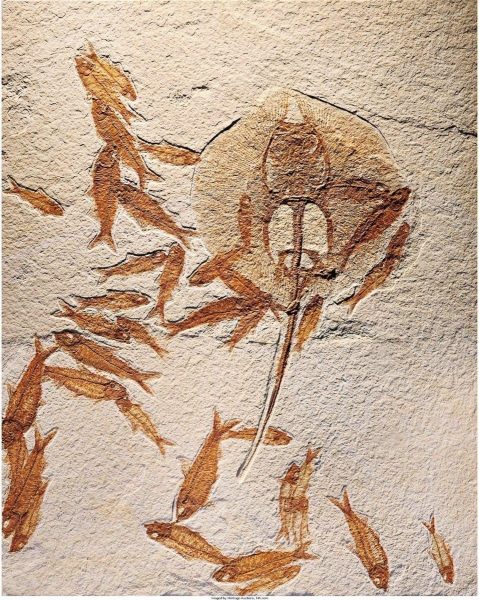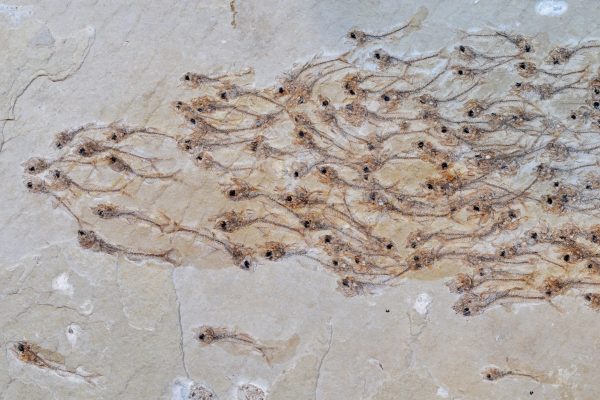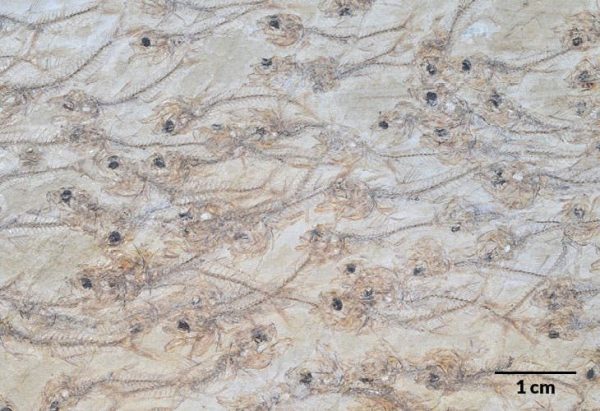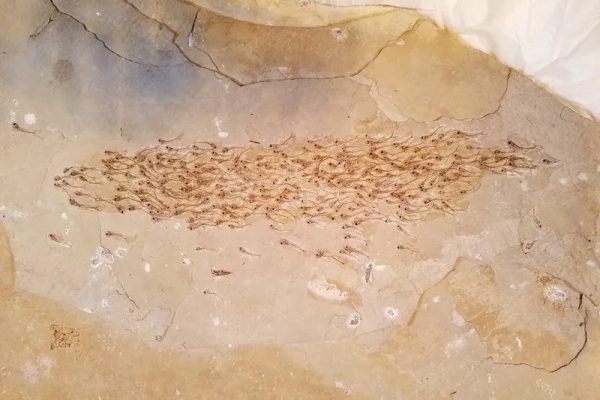The discovery of a 50-million-year-old fossilized slab of limestone has provided a remarkable snapshot of a school of fish, frozen in time during migration.

The fossil, found in the Green River Formation in the United States, likely depicts a group of 259 juvenile fish belonging to the extinct species Erismatopterus levatus.
The fish, each measuring less than an inch, are arranged facing the same direction, exhibiting behavior similar to modern schools of fish. Computer simulations based on water currents and spatial distribution suggest that the prehistoric fish were swimming in a coordinated fashion to reduce the risk of predation.

Researchers measured the exact position and direction of each individual fish in the fossil, running 1,000 computer simulations to predict the group’s most plausible next position.
The simulations, based on factors such as water currents, spatial distribution, and behaviors seen in modern fish schools, align with the notion that the ancient fish were undulating along in a coordinated manner when they met their demise.

The fish likely traveled as a pack to reduce the risk of falling prey to predators, with the simulations showing that the highest concentration occurred at the center of the school, providing better protection against potential attacks from marine creatures.
However, uncertainties exist regarding the circumstances of the fish’s death and the accuracy of their fossilized positions. It is unclear whether the fossil represents an exact manifestation of the animals’ movements or if they moved into the formation during the fossilization process.

The rapidity of the fossilization process and whether the fish were already dead at the time also raise questions about the accuracy of the representation.
Despite these challenges, the slab offers valuable insights into the ancient behavior of fish and the existence of coordinated schools as far back as 50 million years ago.
